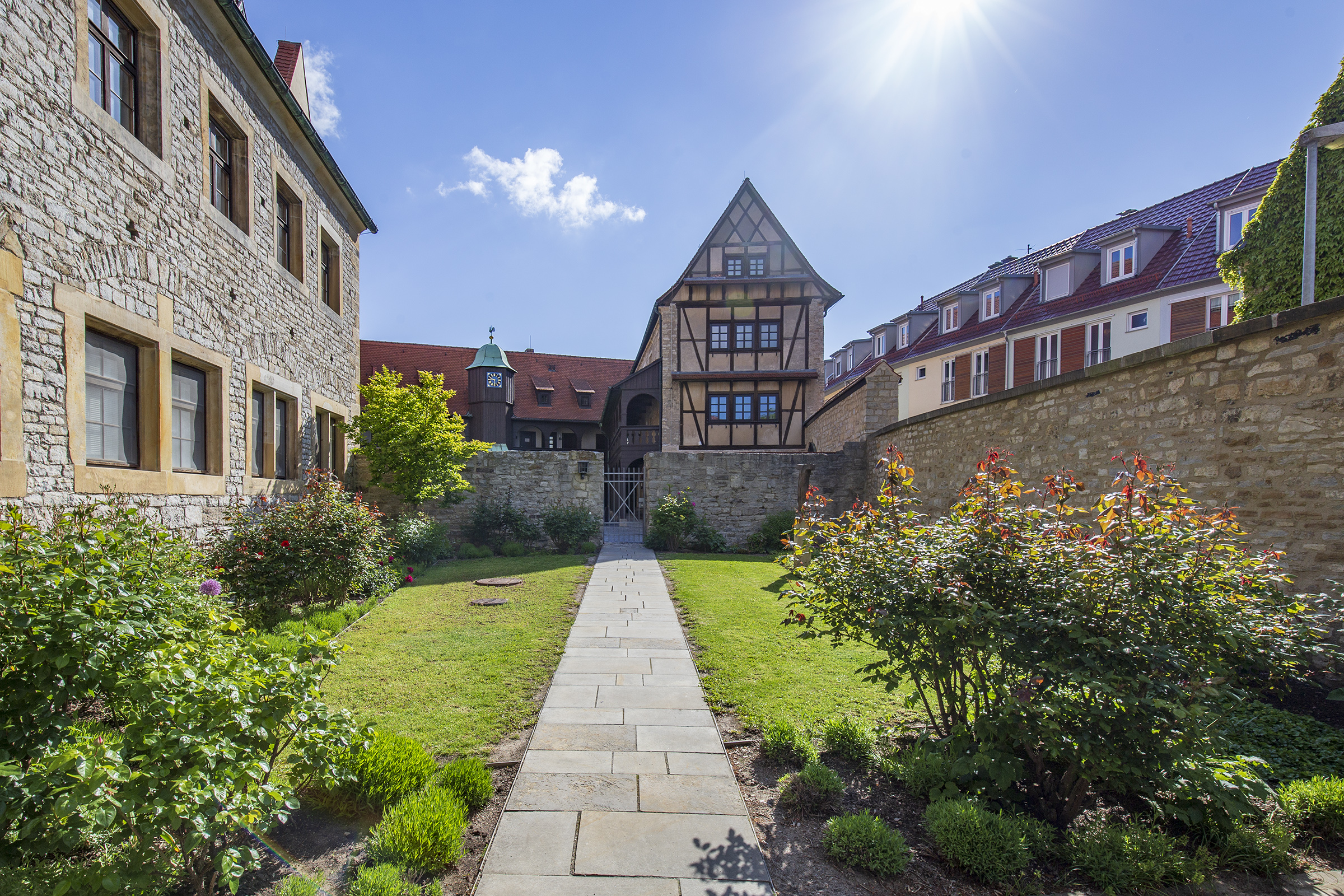
Augustinian Monastery in Erfurt
A life of strict asceticism
The 21-year-old probably willing chose the “hard way” when he knocked at the monastery gate on 17 July 1505. He knew that a reformed order, in which the rules were interpreted particularly strictly, was awaiting him. But knowing this and experiencing it are two different things. The monastery life was about humility and privation. Renunciation of comfort, food, privacy, self-determination. The monks’ hair was cut off, and they had to walk with their eyes on the ground. Compulsory silence, small portions of food and months of fasting. Cleaning work in the church and the privies. Prayers seven times a day. In between these times, work and not much sleep.
The Augustinian hermits took their rules very seriously. And perhaps it was the very relentlessness and strictness that appealed to the young Martin. If he was going to do it, then he was going to do it right!
So he knelt down, completed his novitiate and took his monastic vows in 1506. During the ceremony, he lay in front the altar with his arms outstretched and his face on the floor. Beneath him was the gravestone of Johannes Zacharias, who had been jointly responsible for the burning of Jan Hus 100 years earlier. An irony of fate? A sign? Later, Luther would propagate similar “heretical” ideas to those proclaimed by Hus.

The Augustinian Church in Erfurt from the outside ©Stadtverwaltung Erfurt
Monastic life made the young man finally grow up. Here, he received his theological education and began an academic career. He was serious and thorough, wanted to do everything right and noticed initial inconsistencies between church practice and theory. But the idea of “reform” was still far from his mind. First, he became a priest and went to the University of Wittenberg in 1511.
He returned to Erfurt years later as a Reformer. The reforms were so far-reaching that even the ultra-conservative Augustinian monastery became a Protestant institution. The buildings served as a grammar school and library, an orphanage was formed later, and the Erfurt Union Parliament met here in 1848, one of the delegates being the young Otto von Bismarck.
Today, the site is a museum, church and event and conference centre. It is also possible to spend the night here: light rooms in monastic tranquillity, without a radio or TV, good for inner reflection. The site brings together historic and new buildings. The old gate, on which Luther is supposed to have knocked, still exists. And so do the choir-loft windows in the church, which date back to the period around 1300. The monk Martin probably always had them in sight during the Liturgy of the Hours and the church services. He later adopted the artistic rose from the “lion and parrot window” as the model for his family emblem, the Luther rose.
Did You Know?
Header: ©Stadtverwaltung Erfurt
Information for Guests
Information of the Museum
Information of Architecture
In the mountain
Mobility Offers
Offers and service
Area
Congress facilitys
Distances







